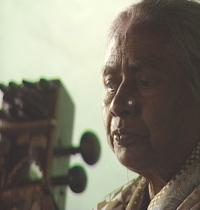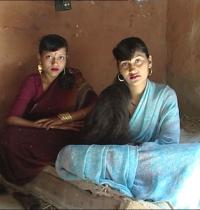Saba Dewan
Grant Period: Over one year
An earlier IFA grant supported Saba Dewan to undertake meticulous research towards a film tentatively titled In Search of Umrao. It has taken Saba more than a year to arrive at a script that seems to lend itself to a coherent film. Meanwhile, she has completed another film that emerged out of her research on tawaifs, one which documents a modified tawaif sexuality practiced by working-class bar dancers.
Striving for cinematic focus and clarity, Saba revisited Muzzafarpur, Benaras and Lucknow and followed up archival leads and other material related to the music and life of Rasoolan Bai, the well-known exponent of purab ang. Chand Khan, as a young sarangi player, had accompanied Rasoolan Bai regularly in her performances and is possibly the only person alive who is able to provide firsthand information on her life. At the centre of the film, Saba explains, is the ‘mystery’ surrounding the sensuous and playful thumri “phool gandwan na maar”, which Rasoolan Bai is believed to have altered. Through Rasoolan Bai’s story, therefore, Saba will examine the silences in tawaif history.
She has chanced upon a quirky collector who has group photographs, taken at the behest of the Rani of Betwa, of all the tawaifs of Benaras dressed in full regalia. And in a private museum Saba has found turn-of-the-century paintings and photographs of individual tawaifs with their patrons and the original manuscript of a late 19th century satirical poem written as a tribute to the tawaifs of the city.
The film, as Saba imagines it, will map multiple voices and narratives. One of its key concerns will be with female genealogies, the passing on of skills and knowledge from one generation to another. Saira, who hails from Bihar but migrated to Benaras in search of a living, has close ties with the tawaif community in Muzzafarpur, especially Rani and Daya Kumari.
Many including Saira have a romantic but faint memory and even more tenuous link with the musical legacy of the tawaif tradition. For Saira, even the experience of mehfils, rich patrons and exposure to gifted musicians that find articulation in Rani and Daya Kumari’s personal histories, remain apocryphal anecdotes outside her own life.”
Saba will cast her film in the familiar form of the dastaan, a prominent genre in pre-modern Urdu fiction. The motif of the journey and within it, the use of the device of the life story, is an extremely popular narrative strategy of the dastaan. The dastaan, a flexible form that thrives on subtexts and extrapolations, will allow Saba to deal with living persons, like Rani Begum and Daya Devi from Muzaffarpur, Zarina Begum from Lucknow and Saira from Benaras, as well as with the fragmentary histories and anecdotes about tawaifs from the past, like Azizan, Mallika Jan, Gauhar Jan, Nanhwa and Bichchwa Jan and, of course, Rasoolan Bai.



